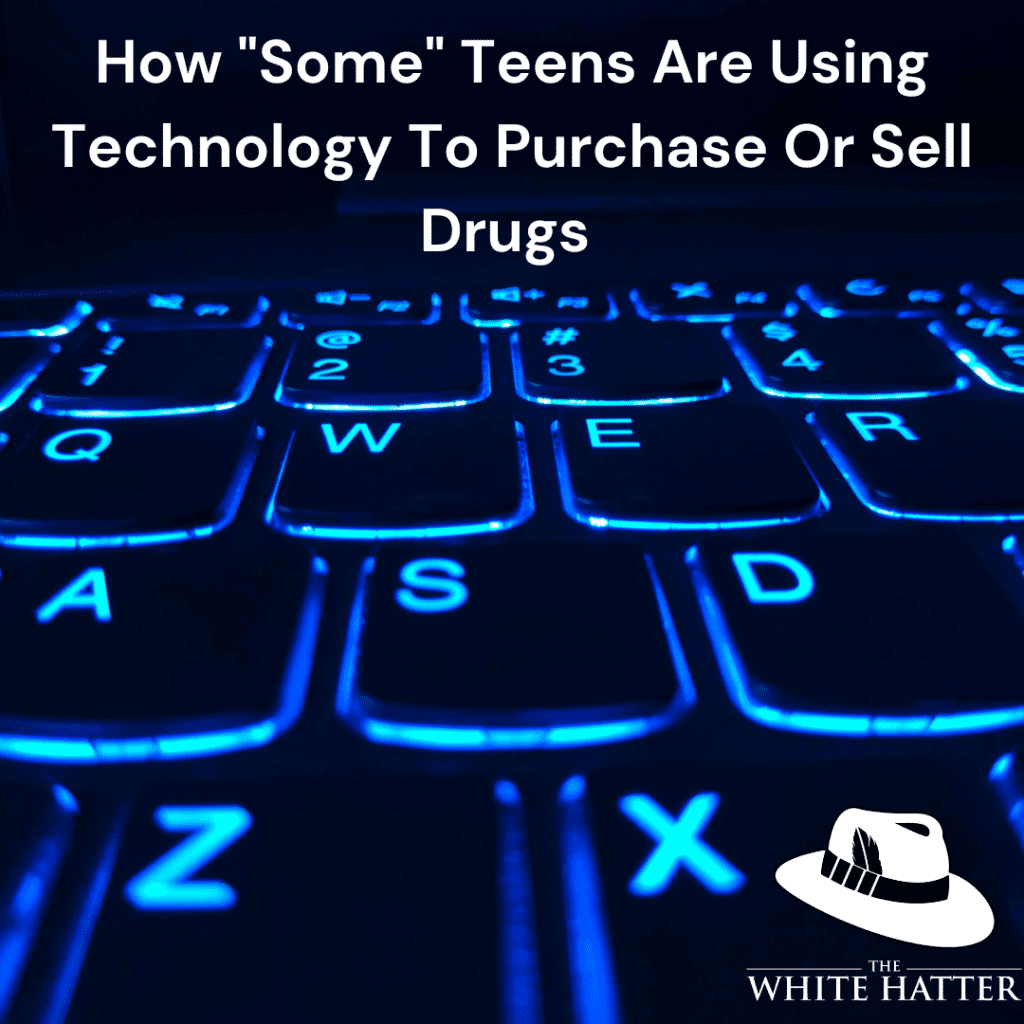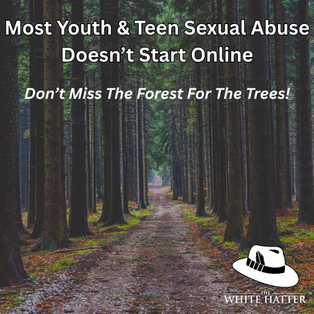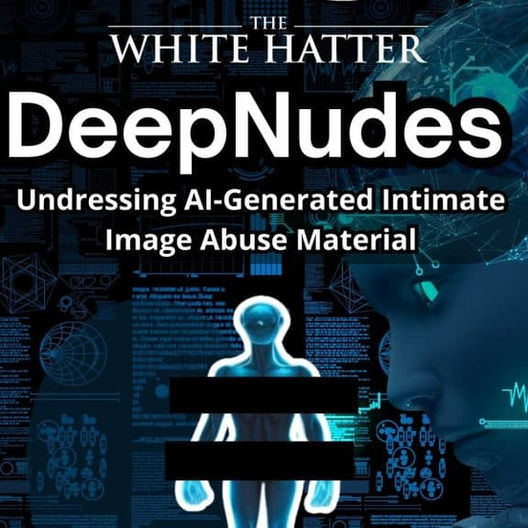How "Some" Teens Are Using Technology To Purchase or Sell Drugs Online
- The White Hatter

- Sep 24, 2023
- 4 min read
Updated: May 19

Recently, we were contacted by a parent concerned that their teen was using his cellphone to purchase illegal drugs online. After assisting this parent, we felt it was time to publish a blog post about this challenging and important reality.
With all the positives that technology brings, there are also negatives. As we’ve been saying for years: the internet is not all sugar and spice and everything nice—sometimes it’s snips and snails and puppy dog tails. With the widespread use of technology and the internet, it has become easier for some youth to buy and sell drugs online [(1)(2)]. However, this behaviour can result in serious consequences [(3)(4)(5)]. Research in the United States found that 25% of teen drug overdose deaths since 2019 were attributed to fake pills purchased online [(6)]. With the ease of ordering food or hailing a ride-share, teens no longer have to rely on street dealers, friends, or even the dark web to access illicit drugs—they can now connect with dealers directly through their smartphones. Using popular social media platforms, encrypted chats, and legitimate payment and shipping services, drug dealers have emerged from the shadows.
In this post, we will explore how teens are buying and selling drugs online, based on what we and others have seen, and the risks associated with these activities that parents and caregivers should be aware of.
Dark Web Markets
One method teens use is through “dark web markets” such as Monopoly, Versus, ASAP, AlphaBay, Wall Street, Archetyp, Bohemia, Empire, Dream, and White House [(7)].

The dark web is a hidden part of the internet not indexed by search engines like Google and is only accessible through specialized software, such as the Tor browser (The Onion Router). Tor uses complex algorithms to mask IP addresses, offering increased privacy and anonymity.
While law enforcement agencies work hard to shut down these markets, new sites continuously emerge. These sites should never be considered safe or reliable sources for purchasing drugs. Illicit drugs purchased online are just as dangerous as those bought on the street due to their unregulated and unknown contents.
Social Media Platforms
Another route is through social media. These platforms make it easier for users—including teens—to connect and exchange messages. Just open Instagram and search terms like “buy cocaine,” “buy weed,” or “buy shrooms” to see what comes up.
Snapchat, in particular, offers tools that protect dealers from law enforcement posing as teen buyers. Features like Snap Map show real-time locations, and the app alerts users when someone tries to screenshot chats. Dealers often post menus of their pills and prices on their public Stories, place posts where teens gather, and pin menus to their Snap Map locations—making it easy to distinguish between kids and undercover officers. Many parents may also be unaware that Snapchat includes a “nearby” feature [(8)] that helps connect teens and dealers at parties or music events. At these events, dealers may also distribute QR codes linked to menus of drugs for sale.
Encrypted Messaging Apps
Apps such as Telegram, Signal, and WhatsApp are also used to facilitate drug transactions. These encrypted platforms make it difficult for parents, educators, and law enforcement to monitor communication. Online, drug dealers are often referred to as “plugs.”
Online Forums
There are also forums and discussion boards dedicated to drug culture. These communities allow users to share information about drugs and can facilitate buying and selling.
Red Flags to Watch For
Here are potential warning signs that your child may be involved in purchasing or selling drugs online:
Secrecy around online activity (e.g., hiding screens, clearing browsing history)
Dishonesty about their behaviour
Receiving unexpected packages or suddenly returning home with parcels
Unexplained spending or missing money
Spending excessive time online or in isolation
Frequently locking their bedroom door
Signs of drug use, including mood swings and behaviour changes
So What Can Parents and Caregivers Do?
#1: Talk to your kids about the content of this post.Research shows that parental communication, participation, and appropriate overwatch greatly reduce the likelihood of youth engaging in risky online behaviour.
#2: Know the language.Law enforcement has identified emojis, hashtags, lingo, and shorthand that teens use to refer to illicit or prescription drugs.
Examples include:
Xanax: “pill,” “candy bar,” or “bus”
OxyContin/Percocet: “pill,” “blue dot,” “banana,” or 🚏 (parking sign emoji)
Heroin: 💩 (brown heart or similar) or 🐉 (dragon emoji)
Adderall: “pill,” “A,” or 🚂 (train emoji)
The American DEA has published an excellent infographic, relevant in Canada as well, showing some of these emoji codes. Regional differences may apply (e.g., a brown heart emoji may mean heroin in B.C. but not in Nova Scotia).



#3: Know what your child may be buying.Drug misuse includes both prescription and non-prescription drugs, such as cough syrups containing DXM, which can induce hallucinations similar to ketamine or PCP.
Keep an eye out for unusual deliveries from Amazon or other courier services. If suspicious, investigate what’s actually being shipped.
In Canada, youth under 18 often need a co-signer to open a bank account, which gives you the legal right to review account activity. Look for suspicious transactions or unusual transfers via their bank or PayPal accounts.
#4: Monitor online behaviour.If you're concerned, check their search history on devices. Look for concerning terms and talk openly about what you find. While your child may see this as a privacy invasion, frame it as concern for their safety. Be aware that tools like “Incognito Mode” or “Private Browsing” can hide search histories.
#5: Get a free Naloxone/Narcan kit.If you suspect drug use, or if prescription opioids are present in the home, having and knowing how to use Naloxone could save a life.
The buying and selling of drugs online is illegal and dangerous. Teens must understand that these behaviours can lead to severe legal consequences—and more importantly, to serious injury or death. As parents and caregivers, it’s our job to engage with them, stay informed, and take proactive steps to reduce risk.
Technology has its dark corners. And while the online world presents countless opportunities, it also demands awareness, vigilance, and consistent communication from those who care for youth.
Related Article (“Dusting & Whippets” alternative ways youth are getting high)
Sources:














